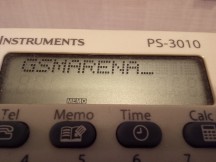Xiaomi Redmi Note 8 2021 review

Familiar quad-camera setup
The Redmi Note 8 2021 borrows its camera setup from the vanilla Redmi Note 8. It consists of a main 48MP Quad-Bayer camera alongside an 8MP ultrawide and two 2MP macro and depth sensors.
Looking at the reported software camera support, the main camera uses the tried-and-true Samsung ISOCELL S5KGM1, colloquially known as the GM1. The 8MP ultrawide uses the OmniVision OV8856.

Before we get to quality analysis, a few words about the MIUI camera app. Not much has changed here, the UI is still clean and well-organized. The only real issue we have with the present organization is that Macro mode is a toggle in a separate menu, instead of a mode, making it hard to find.









Camera app general UI and settings
Most of the important controls are conveniently available straight from the main screen, with some hidden away just barely behind an extending sandwich menu, of sorts. There are three zoom toggles available by default - 0.6x, 1x and 2x, even though there is no dedicated telephoto on the Redmi Note 8 2021. If you start pinch-zooming, though, more toggles show up as well, up to 10x.
There are plenty of settings to adjust as well, and the modes interface is entirely customizable. There is also a dedicated Pro mode, which includes manual focus, shutter speeds between 1/4000 and 30 seconds, ISO between 100 and 3200 and exposure compensation. Pro mode can be used on both the main and the ultrawide camera.
Photo quality - daylight
Let's kick things off with the main 48MP camera. Like we said, it uses a SAMSUNG GM1, behind an f/1.8 lens with PDAF. Nothing fancy, but also quite a familiar setup, which we know is capable of producing very decent shots. The 12MP binned default shouts that the Redmi Note 8 2021 produces are far from perfect.








Xiaomi Redmi Note 8 2021: 12MP main camera samples
Resolved detail is good and colors look natural. Noise is a bit higher than we would have liked to see. But, unquestionably, the one major issue with these shots is exposure. With HDR set to Auto and AI enhancement enabled, the Redmi Note 8 2021 consistently overexposes in its default mode. The culprit is definitely the AI system, since toggling it off remedies most of the overexposure issues.





Xiaomi Redmi Note 8 2021: 12MP main camera samples, AI enhancement OFF
We initially noticed this odd behavior while shooting the photos themselves since AI would often take a few seconds to actually kick in and start working, and any shot you manage to capture before that happens is exposed much better.
This is also the case when shooting in full-res 48MP mode, since AI enhancement is not available at this resolution.






Xiaomi Redmi Note 8 2021: 48MP main camera samples
You get slightly more fine detail from these 48MP shots and perhaps a bit less softness in uniform areas, like the sky. Colors remain consistent and true to life. Perhaps even a bit subdued, depending on your standards.
Unfortunately, this overexposure issue is not limited to the main camera. The 8MP ultrawide camera is arguably affected even worse by whatever is going wrong, given its narrower dynamic range to start with.





Xiaomi Redmi Note 8 2021: 8MP ultrawide camera samples
The misbehaving AI algorithm even introduces a nasty tint to the ultrawide. Turning it off yields much better results overall. Even in these better shots, noise and softness are a constant problem, more so than we would have liked to see, even from a budget device. On a more positive note, colors are impressively consistent across the two cameras.





Xiaomi Redmi Note 8 2021: 8MP ultrawide camera samples, AI enhancement OFF
There is no dedicated zoom camera available on the Redmi Note 8 2021. Still, like we mentioned, it offers a 2x toggle right on the main UI, and once you start pinch zooming, 4x, 6x, 8x, and 10x toggles appear, as well.






Xiaomi Redmi Note 8 2021: 12MP 2x main camera samples
2x zoom shots look very respectable, with plenty of detail. Naturally, they are a bit softer than the 1x photos overall and have to deal with more noise suppression artifacts. Definitely usable, though.








Xiaomi Redmi Note 8 2021: 12MP zoom samples: 4x • 6x • 8x • 10x • 4x • 6x • 8x • 10x
These issues get worse with higher zoom levels, but we have to say that with a steady hand and enough patience even the 10x shots can be usable. For what that's worth.
Unfortunately, zoom shots are not immune to the AI oversharpening issues.




Xiaomi Redmi Note 8 2021: 12MP 2x main camera samples, AI enhancement OFF
Honestly, in its current state, it's probably better to just leave the AI enhancement system off. Or, alternatively, make sure you adjust the exposure manually.
The 13MP selfie camera captures great stills. Detail is plenty, colors look great, there is little leftover noise.






Xiaomi Redmi Note 8 2021: 13MP selfie camera samples
Even though there is no autofocus, the focus plane is quite forgiving. Overall, very few complaints.
There is a Portrait mode available on the Redmi Note 8 2021. It can either be used on the main camera on the back or with the selfie. There are only a couple of options available, including an AI toggle, which you should probably avoid here as well and a basic adjustment for the blue intensity.
Portraits from the main camera look solid. Subject detection and separation are above average, even if not perfect. The bokeh looks nice. It should be noted that the viewfinder preview doesn't work particularly well and is not representative of the final results.






Xiaomi Redmi Note 8 2021: 12MP main camera portrait samples
Portrait mode works on non-human subjects too, though it is a bit fiddlier to get it to do so.



Xiaomi Redmi Note 8 2021: 12MP main camera portrait samples, non-human subjects
Selfie portraits are also great. Naturally, the subject detection and separation aren't quite as good without a dedicated depth sensor, but not by a lot.






Xiaomi Redmi Note 8 2021: 13MP selfie camera portrait samples
The 2MP macro camera is nothing to phone home about. Given its inherent limitations, though, it still produces decent shots. Usable for reading small text, as well as social media.



Xiaomi Redmi Note 8 2021: 2MP macro camera samples
One thing we have to note about the photo capture experience as a whole is that the Redmi Note 8 2021 is slow to capture shots. Definitely slower than its vanilla sibling with a Snapdragon chipset. This is not really dependent on the camera or mode you are using either, HDR and AI do not seem to affect shooting speed either. With the sole exception of Night mode, of course, though, ironically, it is not overly slow for a budget device.
Last, but not least, here is how the Redmi Note 8 2021 stacks up against the competition in our extensive photo compare database. Pixel-peep away.



Xiaomi Redmi Note 8 2021 against the Xiaomi Redmi 9T and the Samsung Galaxy A12 in our Photo compare tool
Photo quality - low-light
The Redmi Note 8 2021 expectedly struggles a bit in low-light conditions, but even so, it does alright for a budget phone. The main camera, in particular, spits out good shots, with little left-over noise and well-balanced dynamic range, with well-controlled light sources and decent detail in the shadows.




Xiaomi Redmi Note 8 2021: 12MP main camera low-light samples
In fact, there is plenty of detail all throughout the frame, although some of it is notably lost to noise suppression, which, while doing its job results in some general softness. Some of that, in turn, is counteracted by automatic sharpening, which is thankfully not overly aggressive, with few oversharpening artifacts.
These photos were all taken with HDR set to Auto, and AI enhancement enabled, just like we did for the daily shots. The AI algorithm was a bit all over the place in low-light as well, with a tendency to boost exposure, which, however, frequently works in favor of the Redmi Note 8 2021. Leaving AI on, however, does also produce a noticeable yellow to red tint, which is absent when AI is turned off. Further proving that AI still needs some work on the Redmi Note 8 2021.




Xiaomi Redmi Note 8 2021: 12MP main camera low-light samples, AI enhancement OFF
Shooting in 48MP full-res mode isn't as beneficial in low-light conditions as it is during the day since any potential increase in resolved detail tends to be lost to the noise-reduction algorithms. Still, these shots aren't any worse either.




Xiaomi Redmi Note 8 2021: 48MP main camera low-light samples
The Redmi Note 8 2021 has a dedicated Night mode, which drastically improves the quality of low-light shots in more ways than one. These photos come out brighter, with boosted shadows, but also well-contained highlights and light sources. Details seems better too. It is absolutely worth it to wait a few seconds for a Night mode shot, especially since the Redmi Note 8 2021 isn't overly slow to capture Night mode shots.




Xiaomi Redmi Note 8 2021: 12MP main camera Night mode samples
The only real complaint we have with Night mode is that it only works on the main camera - no ultrawide, no selfie cam and even no zooming.
The ultrawide camera expectedly struggles even more in low-light conditions. Still, it produces what we would call usable shots. Softness is present all throughout the frame and so are noise-suppression artifacts, but it's far from the worse we have seen and definitely good enough given the available hardware and the Redmi Note 8 2021 price point.




Xiaomi Redmi Note 8 2021: 8MP ultrawide camera low-light samples
The ultrawide has the same issues with AI enhancement as well, mostly manifesting as a color tint. Here are some shots with it turned off for comparison.




Xiaomi Redmi Note 8 2021: 8MP ultrawide camera low-light samples, AI enhancement OFF
2x zoom shots from the main camera are pretty decent, comparable to 1x ones, just like before.




Xiaomi Redmi Note 8 2021: 12MP 2x main camera samples
Unfortunately, the AI issues are present here as well. Here are some 2x shots with it turned off.




Xiaomi Redmi Note 8 2021: 12MP 2x main camera samples, AI enhancement OFF
Anything past 2x zoom is kind of a blurry mess more often than not. With enough patience and a steady hand, you could, perhaps make out something in the distance, but we wouldn't call these photos usable.








Xiaomi Redmi Note 8 2021: 12MP zoom low-light samples: 4x • 6x • 8x • 10x • 4x • 6x • 8x • 10x
Finally, the 13MP selfie camera fairs as well as we could have hoped in low-light conditions. That is to say that noise and softness are aplenty, but shots are still decent.



Xiaomi Redmi Note 8 2021: 13MP selfie camera low-light samples
Portraits still manage to work even in such conditions, which is admirable, though you should expect worse results overall.



Xiaomi Redmi Note 8 2021: 13MP selfie camera low-light portrait samples
Video capture quality
We, unfortunately, arrive at what is probably the biggest Achilles` heel on the Redmi Note 8 2021, post its chipset swap - video recording. Unlike the Snapdragon 665 found in the original Redmi Note 8, the MediaTek Helio G85 can only capture up to 1080p video.

Before you ask, yes, we tried Open Camera, just to see if we could get 4K with no luck. Apparently, this is a DSP limitation.
Clips get saved in a standard AVC + AAC combo MP4 file and you do get a choice between h.264 and h.265 (HEVC). The former has less compression and produces a decent video stream of around 20 Mbps at a bit of a wobbly frame rate, averaging around 29.6 FPS, instead of the usual fixed 30. Audio is stereo at 48 kHz. Standard stuff all around, with nothing too special.
Quality-wise, the main camera is solid all-around, with the biggest drawback, expectedly, being the amount of resolved detail. Kind of expected at 1080p. Otherwise, noise is kept at bay, dynamic range is decent, even if not amazing, and colors look nice and true-to-life. Pretty mature processing, overall.
The ultrawide retains most of the positives characteristics of the main camera, like good-looking colors and decent dynamic range. It doesn't struggle with excessive softness either, although there is a bit more noise in the frame than we would have liked. Some of it is likely due to sharpening.
The Redmi Note 8 2021 doesn't have a dedicated telephoto camera, but still offers a 2x toggle for video capture right on the main UI. The results aren't disappointing either. In fact, aside from a bit more noise, we actually think they are comparable to 1x videos, which is great to see.
One interesting video capture feature on the Redmi Note 8 2021 you don't see every day is smooth zoom. It works differently based on which camera you start the video capture with. Since it does not switch from one camera to the other, you can get up to 6x zoom on the main one, while the ultrawide goes up to 2x zoom. The zoom itself is impressively smooth, and we can see this feature getting some utility in the real world. Here is a test zooming video was done with the ultrawide.
In terms of stabilization, the Redmi Note 8 2021 offers a toggle in the camera settings, which applies EIS to both the main and the ultrawide cameras.
It works surprisingly well and smiths out most shakes and bumps while walking. It also does not lower the capture resolution further - staying at 1080p on both cameras. The one issue we did experience with it was a bit of focus hinting on the main camera. Not game-breaking, but we would still, probably stick to stabilized ultrawide videos instead.
Low-light video quality is decent, but nothing to phone home about. The ultrawide camera shoots particularly soft clips, but still usable. We would have really liked to see more resolution and extra detail, but that's just the reality on the Redmi Note 8 2021.
Finally, here is the Redmi Note 8 2021 in our extensive video compare database.



Xiaomi Redmi Note 8 2021 against the Xiaomi Redmi 9T and the Samsung Galaxy A12 in our Video compare tool
Reader comments
- Anonymous
- 12 Jan 2022
- rpJ
Slow motion was downgraded too from 240 fps to 120 fps👎🏼 so be aware (even GSMArena didn't notice)
- Ian Setiawan
- 05 Oct 2021
- DEP
I thought only Samsung that made little downgrade to their New phones. Specially changing UFS back to aged eMMC typr storage. Goodluck then, Xiaomi!
- Anonymous
- 04 Oct 2021
- yJp
I don't understand why release this phone with old name?





